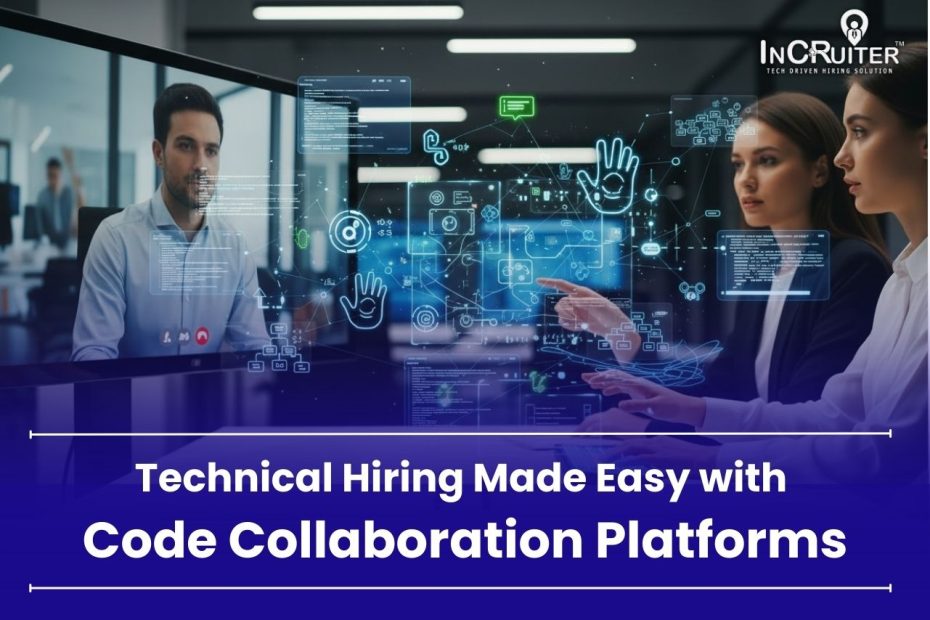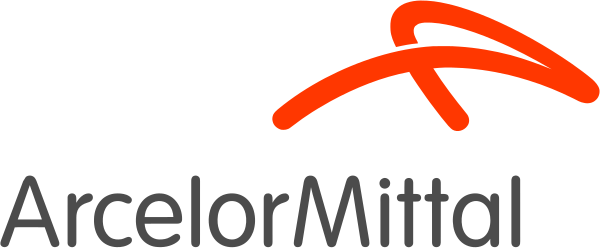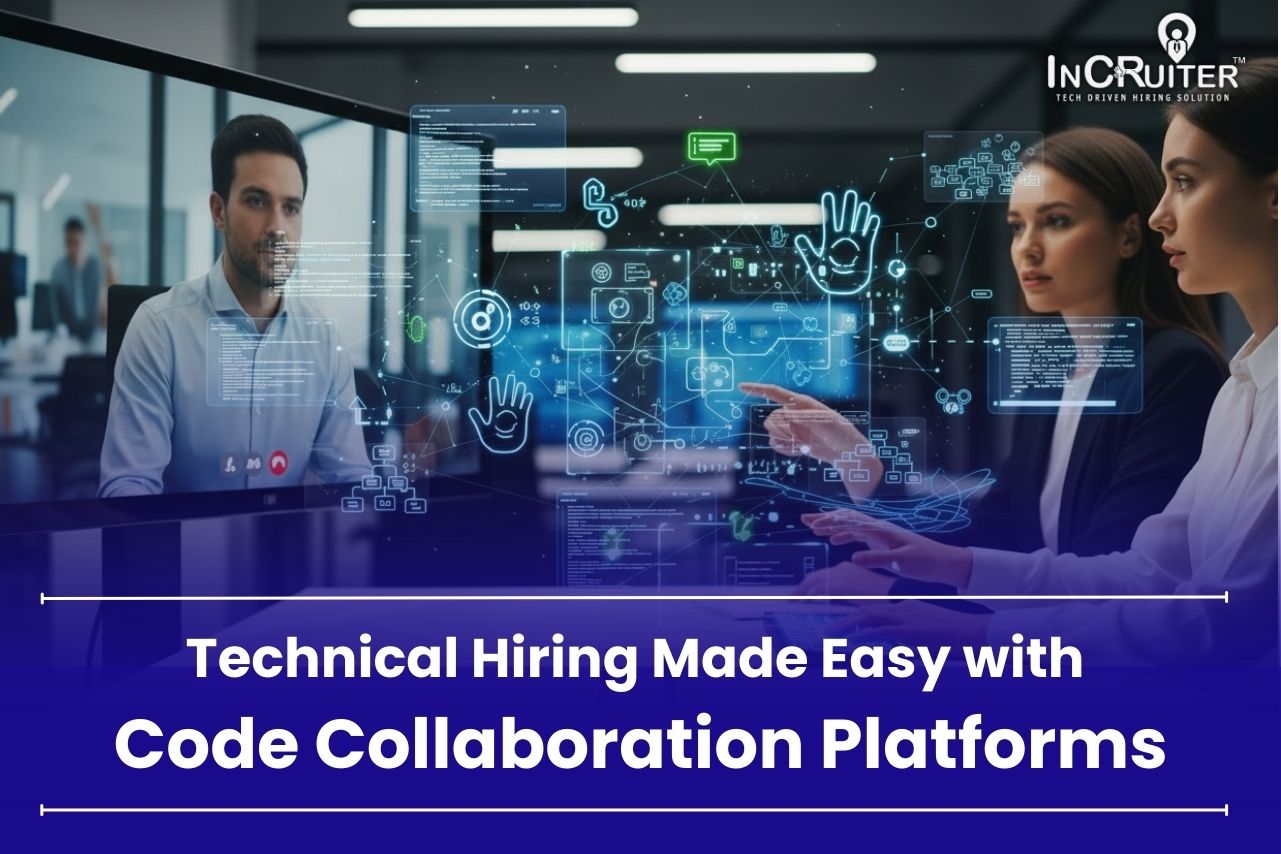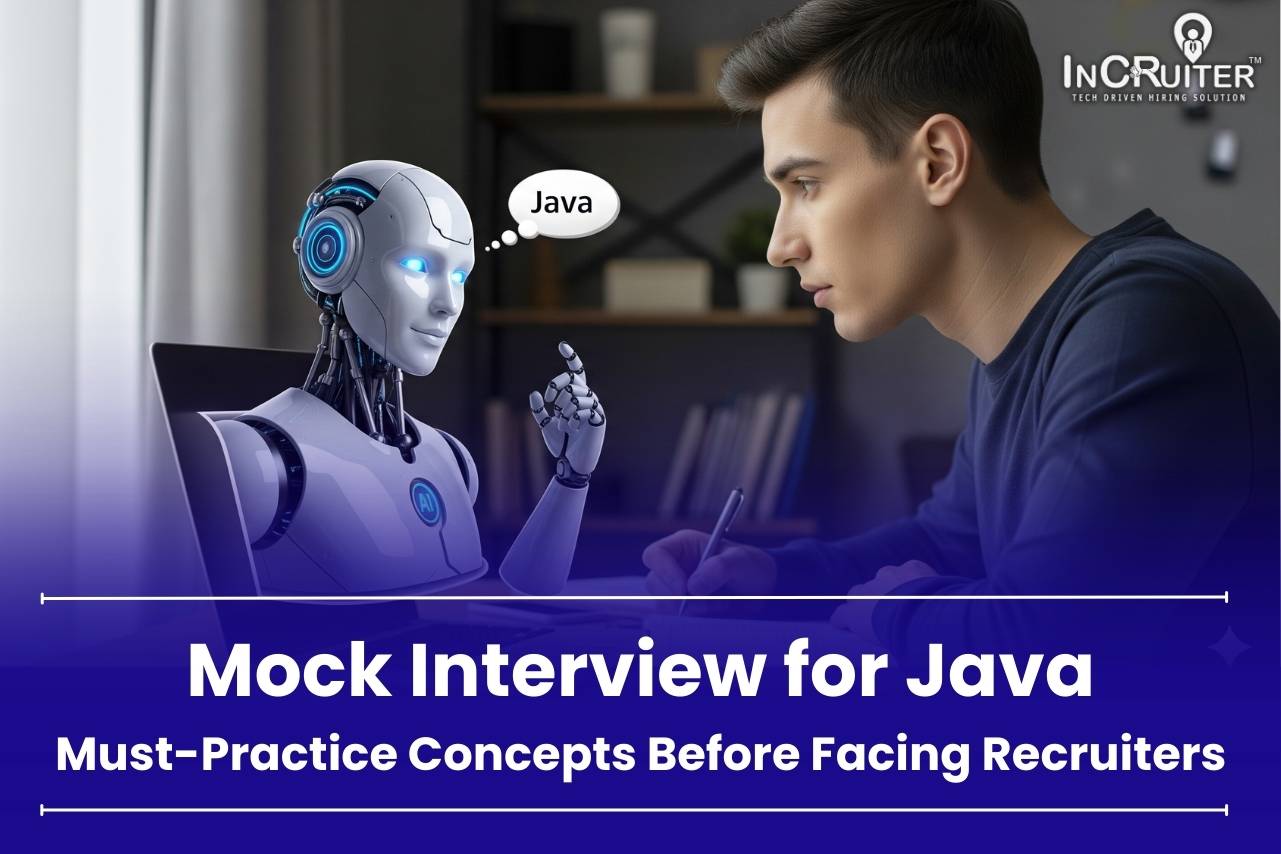Nearly 78% of recruiters admit they’ve hired the wrong developer within the last two years, costing companies both time and millions in productivity loss. Traditional coding tests often fail to reveal how candidates actually think, debug, or work in teams.
Meanwhile, technical panels lose hours chasing schedules, only to evaluate under pressure and bias. The result? Slow, inconsistent, and risky hiring decisions.
What if there was a way to watch candidates code live, adapt to challenges, and collaborate naturally? This blog explores how code collaboration platforms make technical hiring smarter and easier
What Are Code Collaboration Platforms?
Code collaboration platforms are structured technological environments designed to facilitate collective software development. They integrate features such as an online code compiler, a whiteboarding tool, and systematic review mechanisms. By consolidating workflows within a unified digital space, these platforms enhance communication, maintain code integrity, and support distributed teams in producing coherent, efficient, and rigorous programming outcomes.
Why Code Collaboration Helps in Technical Hiring?
Hiring the right tech talent is never just about resumes or coding tests. Recruiters need to know how candidates think, adapt, and work with others. Code collaboration platforms bring this to life by turning interviews into realistic, interactive problem-solving sessions.
Real-Time Skill Assessment
In a live collaborative environment, interviewers can watch candidates build logic, debug errors, and refine code in real time. This goes beyond theory or multiple-choice answers, offering recruiters an authentic view of how someone would actually perform in a real project setting.
Transparency of Problem-Solving
When an interviewer asks, “Can you try another approach?”, the platform captures how the candidate pivots. This transparency highlights flexibility, resilience, and decision-making depth qualities that static assessments fail to reveal. Interviewers see not just the end result, but the journey that leads there.
Team Compatibility Check
Hiring isn’t only about coding ability. It’s also about whether someone can collaborate effectively. Shared coding platforms simulate teamwork, showing how candidates communicate their ideas, respond to feedback, and align with others’ input, providing valuable insights into cultural fit and team readiness.
Remote Accessibility
Code collaboration platforms break down geographical barriers. Companies can evaluate candidates across time zones with the same level of accuracy and fairness. This opens doors to global talent, helping companies scale faster without being limited to local candidate pools.
Performance Reports
After the interview, platforms generate detailed records of the session code history, alternative attempts, and applied logic. These insights help hiring teams review collaboratively, reach consensus, and make confident, data-backed hiring decisions instead of relying only on interviewer memory.
Testing Under Constraints
Real-world projects change constantly. By adding time limits or shifting requirements mid-task, interviewers can test how candidates respond under pressure. Code collaboration tools make this easy to replicate, giving recruiters a clear sense of workplace readiness and adaptability before extending an offer.
Also Read: Code Collaboration Video Interview Platforms Explained
Common Use Cases: Pair Programming Interviews
1. Debugging a Production-Like Issue
A SaaS company asks a candidate to debug a broken login function while sharing the screen with an interviewer. The interviewer introduces small hints, and the candidate explains each step as they test fixes. This shows real-world troubleshooting skills and communication clarity under pressure.
2. Building a Feature Together
In a fintech hiring round, the candidate and interviewer co-create a simple “transaction history filter” in a shared code editor. While the interviewer suggests requirements, the candidate writes functions and justifies design choices. This setup reveals how the candidate codes, collaborates, and balances speed with accuracy.
3. Refactoring for Efficiency
During a pair programming session, a startup’s interviewer gives a working but inefficient algorithm for data sorting. The candidate is asked to improve performance without breaking functionality. The exercise demonstrates adaptability, optimisation skills, and the ability to improve existing team code, something crucial in real-world engineering work.
Features to Look For When Choosing a Code Collaboration Platform
Inbuilt Code Compiler
An effective code collaboration platform must include an in-built code compiler. It allows candidates to run and test code instantly without switching coding environments. This feature ensures smoother interview flow, saves time, and gives recruiters real-time visibility into how candidates debug and validate their solutions under interview conditions.
Integrated Whiteboarding Tools
Whiteboarding tools help candidates explain logic, system design, or architectural choices visually. For recruiters, this provides a deeper understanding of problem-solving abilities beyond raw coding. A platform with integrated whiteboarding replicates real-world brainstorming sessions, enabling hiring managers to evaluate conceptual clarity and communication skills alongside technical competence.
High-Quality Interview Recordings
Interview recordings are vital for review and collaboration among hiring teams. High-quality video and code playback ensure evaluators can revisit the candidate’s performance, analyse decision-making, and compare multiple applicants objectively. This feature eliminates reliance on memory and supports transparent, data-driven decisions in technical hiring processes.
Customizable Feedback Report
Recruiters need structured feedback, but every organisation values different metrics. Platforms that allow customisable reports enable interviewers to capture relevant details, coding efficiency, collaboration, adaptability, or problem-solving style. These reports provide actionable insights for post-interview discussions, ensuring evaluation criteria align with the company’s hiring priorities and technical benchmarks.
Compatible with ATS
Seamless compatibility with Applicant Tracking Systems (ATS) streamlines workflows for recruiters. When code collaboration results sync directly with the ATS, there’s no duplication of effort. Candidate performance data, interview notes, and reports remain centralised, improving efficiency and enabling quicker decision-making without disrupting established recruitment processes.
Seamless Calendar Integration
Scheduling is often a bottleneck in technical hiring. Platforms with calendar integration eliminate back-and-forth coordination by syncing directly with recruiters’ schedules. Interview slots become easier to manage, ensuring smoother experiences for both interviewers and candidates while reducing delays that can cause top talent to drop off mid-process.
Top Pair Programming Interview Platform: InCruiter
InCruiter has emerged as a market leader in Pair Programming Interview Platforms, offering recruiters a robust toolset that blends technical assessments with real-time collaboration. With support for over 40 programming languages, built-in video and audio, whiteboarding tools, ATS compatibility, and detailed feedback/reporting, InCruiter enables hiring teams to evaluate both code quality and team fit in one immersive session. It’s trusted by enterprises aiming to streamline technical hiring efficiently.
Conclusion
Pair programming interviews have become a vital strategy for organisations that want to go beyond surface-level assessments and truly understand a candidate’s coding mindset, adaptability, and teamwork. Code collaboration platforms transform interviews into realistic simulations of workplace problem-solving, helping recruiters make faster and more confident decisions. The right platform doesn’t just simplify hiring, it elevates it into a strategic advantage.
Discover how InCruiter’s pair programming interview solutions can help you hire top talent with speed and accuracy. Book your demo today.



















